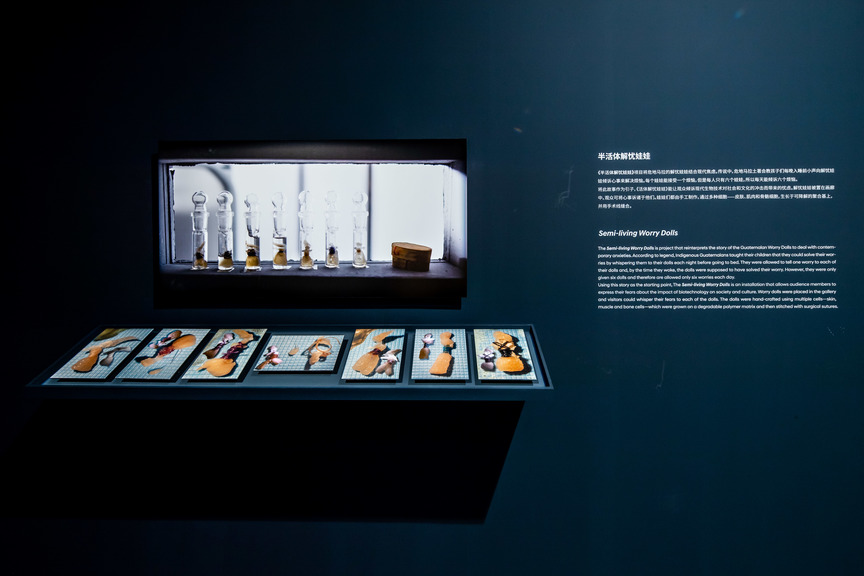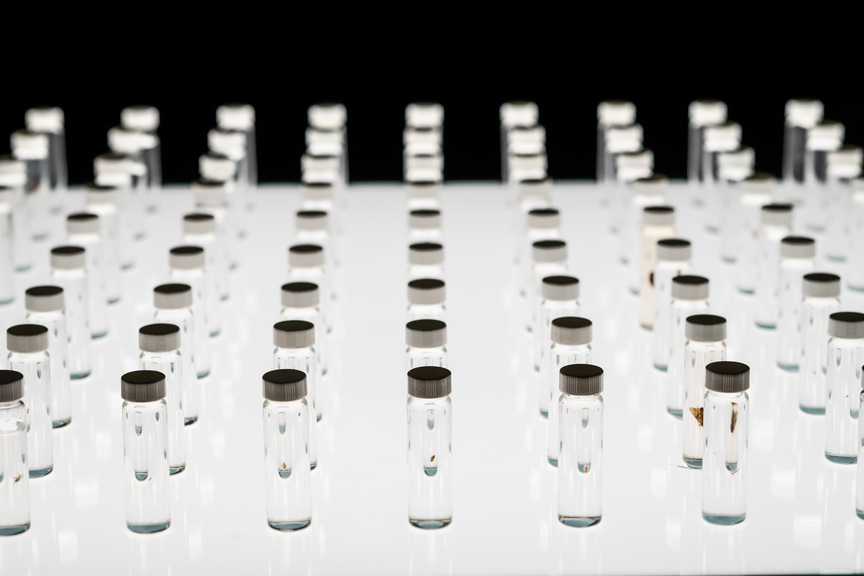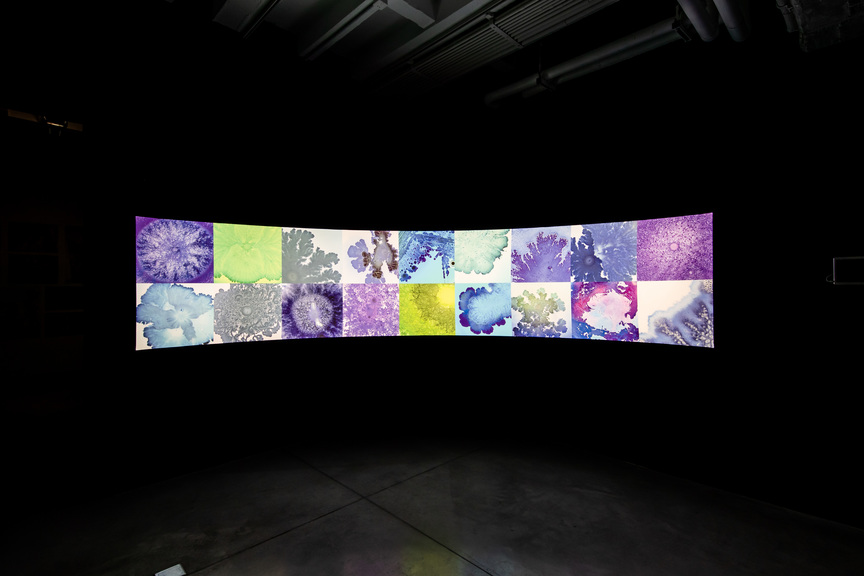-
From Current Issue
-
- Editor’s Letter Fire in the Heart
- Reviews I Gusti Ayu Kadek Murniasih
- Reviews 11th Seoul Mediacity Biennale: “One Escape at a Time”
- Dispatch Networked China
- One on One Monira Al Qadiri on Yukio Mishima
- Essays The rise of independent art spaces in pandemic-era Shanghai
- Features Tuan Andrew Nguyen
- Table of Contents
- Web Exclusives
- Archive
- Subscribe

R
E
V N
E
X
T
Installation view of “Quasi-Nature: Bio Art, Borderline and Laboratory” at Hyundai Motorstudio Beijing, 2019. All images copyright the artists; courtesy Hyundai Motorstudio Beijing.
Philosopher Bruno Latour’s anthropology of scientific paradigms, We Have Never Been Modern (1991), is a post-structuralist attempt to rupture the binaries of subject/object, and society/nature. To this end, Latour details the concept of the “quasi-object,” which is simultaneously shaped by human perception and is objectively real. Similar ideas were at the root of the works shown in the Hyundai Blue Prize 2018 Award Exhibition, “Quasi-Nature: Bio Art, Borderline and Laboratory,” curated by Wei Ying. Featuring contributions by 11 artists and groups, the show traced the currents in bio-art and environmentally oriented practices that diverge from the anthropocentric worldview.
The exhibition kicked off with a short history of bio-art in the 21st century, beginning with the Tissue Culture & Art Project’s The Semi-Living Worry Dolls (2000), a series of seven figures made from cultured tissue and held in glass test tubes. In the same section were documents and photographs that narrate the story of Eduardo Kac’s fluorescent green, transgenic GFP Bunny (2000), created with the gene from a jelly fish, including an image of a bikini-clad woman reading about the glowing rabbit in a newspaper while lying on Ipanema beach in Rio de Janeiro. Another iconic project was Marta de Menezes’s Nature? (1999–2000). By interfering in the development of a group of butterflies’ wings, the artist created new wing patterns, raising questions about the rights of humans to intervene and treat the natural world as a canvas for experimentation.
The second section illustrated how bio-art doesn’t need to be confined to the laboratory. Robert Zhao Renhui’s project All the Insects in the House (2017) is a lightbox with rows of vitrines, each displaying one of the 108 insects that he gathered from his own house. Similarly, Ren Ri put insects—specifically, honeybees—at the creative center of his installation from his “Yuansu II” series (2013–15), a plexiglass box with a honeycomb created by bees. In this case, Ren’s interference with nature consisted of rolling a dice every day to determine which side the box should rest on—a process that resulted in the honeycomb’s irregular, abstract shape
The exhibition jumped from the world of animals and insects to the microscopic organisms that surround and comprise us. Tal Danino presented richly colored and abstracted images of manipulated bacterial cells in his project Microuniverse (2016–18). Danino had combined bacteria known for growing in certain fashions, while also altering their living conditions to create different appearances. The resulting images are reminiscent of the photos of snowflakes by Wilson Bentley, a 19th century American farmer who captured the beauty and complexity of the natural forms.
Similarly trying to alter human perceptions of the micro-world was Peiying Lin’s “Virophilia” (2018– ), which seeks to recuperate the reputation of the tiny, quasi-living entities. The project includes pages from an imagined 22nd-century cookbook that incorporates bacteria into not only the food items, but the experience of eating, like the “Ecosystem Zero Breakfast” that requires sitting outside in a garden with a rich black soil, just after rainfall, when the Actinomycetes virus has released its spores.
The third component of the exhibition, “Lab as the Generator of Surprises,” included documentation of the activities of three famous scientific institutes that currently work with artists: CERN (the European Organization for Nuclear Research); Tara Expeditions Foundation, which organizes ocean residencies for artists; and SETI (the Search for Extraterrestrial Intelligence Institute).
As the exhibition text noted, “Issues of bioethics and modifications of organisms . . . will soon become issues that Chinese society will have to face head-on”—though arguably it already is urgent for all societies today. The relationship between humans and nature has grown increasingly fraught, with the mass extinction of the natural world underway due to pollution, climate change, and over (human) population. At the same time, humans have inadvertently created super-viruses and lethal bacteria in a frenzy to “sterilize” the world. Not to mention scientists are pushing the boundaries of experimentation with the human genome—as with the Chinese scientist who announced in November 2018 at a conference in Hong Kong that he had altered the DNA of twins to prevent them from contracting AIDS from their mother. In the realm of science, humans are perhaps prime examples of “quasi-nature”—conditioned by the society we’ve created to separate ourselves from other creatures, yet materially composed of the same organisms.
HG Masters is deputy editor and deputy publisher of ArtAsiaPacific.
“Quasi Nature: Bio Art, Borderline and Laboratory” is on view at Hyundai Motorstudio Beijing until June 16, 2019.
To read more of ArtAsiaPacific’s articles, visit our Digital Library.



















